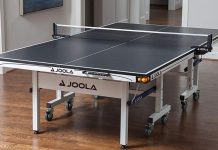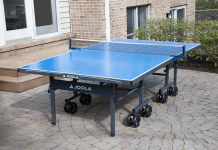Table of Contents
A Timeless Favorite
Yahtzee is a classic family dice game that has you rolling for straights, full houses, and the coveted but elusive “Yahtzee”! The game originated in the 1950s, designed by a Canadian couple to entertain their friends on their yacht. In 1956, the couple sold the rights to toymaker Edwin S. Lowe who gave it the now world-famous Yahtzee name. After resounding North American success, Milton Bradley acquired the rights to Yahtzee to make it the international hit we play today.
My aunt Maxine introduced me to Yahtzee on one of her visits back in the day. She taught my sister and me how to play in her travel camper, to our great delight. We rolled the dice and computed our scores time and again, vying to be the winners. We tried to figure out the best way to account for our unfortunate combinations, but were we choosing wisely?
The basic gameplay of Yahtzee is simple. Players take turns rolling 5 dice three times per turn. Your goal is to maximize your points for each box on the scorecard by rolling the dice combinations listed. After 13 rounds, the boxes are totaled and the winner is the player with the highest score.
I think you can agree that there is a significant element of chance in the game of Yahtzee. As in most board games, with a solid understanding of the rules and a bit of scorecard strategy, you can optimize your game for a better chance of winning.
Yahtzee Hazards
Every toss of the Yahtzee dice forces a decision. How you proceed can make the difference in the size of your final score. It’s important to know which dice to keep and where to put the score for each of your 13 score boxes if you’re playing to win. Consider some of the most common mistakes that Yahtzee players make.
Filling in the Chance box too early
It’s tempting to put your first unfortunate roll score in this box, but it’s not always the best move. You want to consider the numbers you’ve rolled and which other score box may be better to use before defaulting to Chance.
Related Article: Boggle Strategies
Going for a Yahtzee with low numbers
You’ve rolled a couple of ones or twos. Should you go for it? Typically the answer is no since you’ll receive a low 3 or 4 of-a-kind score if you don’t get a Yahtzee. But again, it’s not always that simple. You need to consider other parameters.
Throwing all the dice after the first roll
It may seem like a good idea to start over if you don’t get a good first roll, but this is not a good approach. The odds are better if you are selective about what to keep from your first go and make the best of it.
Missing out on the 35 point bonus
It might seem like a good idea to put low scores or zeros in the top half of your scorecard, but it’s usually unwise to do so. The odds say it’s usually better to make sure you score the minimum 63 points on the top half to earn the bonus.
Related Article: Checkers Strategy Guide
The examples above illustrate how your go-to scoring and rolling choices might be hampering your game. But what are the best ways to handle those game-time decisions? Try the following tips for the best strategies to win at Yahtzee.
Yahtzee Scoring Opportunities
It’s a good idea to make sure you understand all of the scoring opportunities to make the most of your Yahtzee score. We’ll break the scorecard down to make it easy to follow the scoring process and options.
Top Half
The top section of the scorecard is used to record multiples of each number on the die. For example, in the Aces box, you will write in your total of all the ones rolled during your turn. If you rolled three ones, you put down a score of three. Pretty basic multiplication, right?
The next box you need to understand is for the 35 point bonus. You earn these extra points by having the totals for the Aces through Sixes scores adding up to a minimum of 63 points. The easiest way to achieve this minimum is to roll three of a kind for Aces through Sixes. You can achieve the bonus in different combinations in this section, but be aware that if you get less than three of a kind for any of the numbers on the dice, you may be in danger of forfeiting the bonus points.
Bottom Half
The lower section of the scorecard consists of the higher scoring dice combinations. The three of a kind, four of a kind, and chance box scores are based on your rolls. The remaining combinations have set scores. You can make decisions on where to place bad roll totals or take a zero for any of the options in this section based on probability and timing.
Yahtzee Bonus
This is an important section in the bottom half of the scorecard that can be a bit confusing. After you’ve rolled one Yahtzee in a game and filled in the Yahtzee score box, you are eligible to receive the Yahtzee bonus. This includes all additional Yahtzee combinations you roll in the same game.
Related Article: Stratego Bomb and Flag Placement Strategy
Bonus Yahtzees are scored as follows:
- When you roll more than one Yahtzee, you place a checkmark in the Yahtzee bonus check box.
- If it is still open, write the total of the 5 dice in the appropriate top section box.
- If that box is full, fill the three of a kind or four of a kind boxes in the bottom section with the total of the 5 dice
- If those boxes are also full, use your Chance or ‘steal’ any one of the combos with your Yahtzee roll and score as normal. For example, the ‘steal’ the Large Straight for 40 points.
It’s important to realize that the bonus Yahtzee more than just an additional 100 points. You also get the score for whichever combination box you fill in with the appropriate total. That bonus comes on top of your roll scoring, with a possible maximum of 140 points for a second Yahtzee. Nice!
General Yahtzee Strategies to Rack Up Your Score
Filling in your scorecard sensibly can help you achieve consistently higher scores. These suggestions can help inform your Yahtzee rolling and scoring decisions for more game success.
- Know the odds
One of the most useful tips for improving your Yahtzee score is to become familiar with the odds of rolling all of the scoring combinations on the scorecard. This will help you make decisions about which boxes to fill in when rolls don’t fall into any of your open scoring categories. It also makes it easier to choose what combination to go for on your second and third rolls of each turn.
According to Wolfram MathWorld, the basic odds of rolling each combination on the scorecard are as follows:
- Three of a Kind: 15.43 percent
- Four of a Kind: 1.93 percent
- Full House: 3.86 percent
- Small Straight: 12.35 percent
- Large Straight: 3.09 percent
- Yahtzee: 0.08 percent
Related Article: Odds in Battleship
For example, you can see that a three of a kind is the easiest scoring combination to roll. This means that you have a good chance of filling in the top section of the scorecard to achieve the 35 point bonus. You should consider that when deciding what to go for on that second and third roll.
- Go for the higher numbers
Any time you are rolling multiples and need to choose between numbers, always go for the highest number available. This will help you get more points if you don’t make a Yahtzee or four of a kind. It also helps to maximize the score for the top section of the scorecard. This allows you to put zeros in for the ones or twos without sacrificing your 35 point bonus.
- Fill in the most valuable slots first
Go for the most valuable combinations early in the game. This generally refers to the bottom half of the scorecard. If you can get those filled in, it takes some of the pressure off of your rolls leaving the higher probability combinations. You should note that the more valuable combinations have lower probabilities, so it makes sense to give yourself the maximum number of turns to roll them.
Related Article: How to Keep the Balance in Jenga
- Roll for Yahtzees early
Yahtzees are the highest point combination in the game. When the opportunity presents itself, go for Yahtzees earlier rather than toward the end of the game. This strategy gives you a better chance of achieving a bonus Yahtzee for 100+ extra points. If the Yahtzee doesn’t pan out, you can put the score in the top section to work toward the 35 point bonus or in the 3 or 4 of a kind slots.
The following table from Wikipedia gives the probabilities for rolling a Yahtzee based on how many like numbers you have after each roll. You can see that the likelihood of rolling a Yahtzee when you have 4 of a kind is actually fairly good, so trying for it early makes sense if you’re in that situation.
| Most already rolled | Before first roll | Before second roll | Before third roll |
| 4 | N/A | 30.56% | 16.67% |
| 3 | N/A | 9.34% | 2.78% |
| 2 | N/A | 2.91% | 0.46% |
| 1 | N/A | 1.26% | 0.08% |
| 0 | 4.60% | N/A | N/A |
- Focus on the top half of the scorecard
The 35 point bonus attained when the top portion of the scorecard reaches the minimum of 63 points can often be what puts you in the winner’s seat. Make every effort to get at least 3 of a kind for each box for aces through sixes. Since the odds for 4 of a kind are significantly smaller than for 3 of a kind, it’s risky to put a zero in any of the boxes in this section and try and make up the difference in another box.
- Save the Chance box for late in the game
While it’s tempting to fill in the chance box the first time you have a roll that doesn’t work in any of the categories you have open, it’s usually better to wait until later in the game. Think of this box as a last resort, as it can yield more points than some of the combinations that have relatively low odds. Try to use it only when you’re out of other options.
Related Article: How to Win in Uno More Consistently
- Go for the Straights
The combined values of the Large and Small Straights is a whopping 70 points. This makes the Straights the two most valuable combos after Yahtzee. These are two boxes you definitely don’t want to fill with zeros, so make a point to get these combos early in the game when possible.
Second and Third Roll Strategies
Part of optimizing your score is the decisions you make after the first and second rolls. While you could make some complicated mathematical calculations to figure out your best choices on how to roll, that would likely put a damper on your game night invitations. Instead, we’ll discuss some basic and slightly more advanced methods to make the best of your turn.
As a general rule, you should keep the largest number of similar dice and roll the others. There are some exceptions to this depending on what numbers turn up. Use the following basic rules when deciding which numbers to keep and which to roll again to increase your scoring opportunities.
- Straights
If you roll a large straight on the first roll, it’s best to score it since they are relatively difficult to get. When you get a small straight on the first roll, keep it and roll the 5th die for a chance at the large straight. If you have a small or large straight after the second roll, keep them. Score a large straight and roll the 5th die of the small straight to try again for a large straight.
- Full Houses
Generally, if you roll a full house on your first roll, it’s advised to keep the three of a kind and roll the other two dice. The exception is when your three of a kind after your first roll is with ones or twos. In this case, your best bet is to score the full house for a higher potential score. If you have a full house after your second roll with your 3 of a kind with ones, twos, or threes, score it as such. Otherwise, keep your 3 of a kind and roll the other two dice again.
Related Article: Strategies to Maximize Your Monopoly Trades
- Two Pairs
When you roll two pairs on your first or second throw, it’s best to keep the highest numbered pair and throw the remaining three dice again. The main exception to this rule occurs when you have a pair of ones with either a pair of twos or threes after the second throw. In this case, you would keep both pairs and roll the remaining die for your third throw.
- All dice different without a Straight
In this case, you may be tempted to pick up all of the dice and start over on your second roll. It’s suggested to keep only the number 5 if it has been rolled, and put the rest back for your second attempt. If you end up with a 4, 5, and 6 after your second roll, keep them all and use the two remaining dice for your third roll.
Yahtzee Strategy Shortlist
We’ve covered a variety of strategies to remember. This list summarizes all of the tips to help you take some of the guesswork out of your rolling and scoring choices.
- Know the odds
- Go for the higher numbers
- Fill in the most valuable slots first
- Roll for Yahtzees early
- Focus on the top half of the scorecard
- Save the Chance box for late in the game
- Go for the Straights
- Second and Third Roll Strategies: Straights
- Second and Third Roll Strategies: Full Houses
- Second and Third Roll Strategies: Two Pairs
- Second and Third Roll Strategies: All dice different without a Straight
Use these helpful hints and the probability charts to make the most of all of those critical Yahtzee decisions next time you pull out the dice. You’re bound to increase your score and look like a Yahtzee expert at your next game night.

Veronica is a Green Bay-based freelance writer and editor with extensive experience with board games. When not busy scribbling her thoughts, you might find her in her garden, hiking out in the woods, or exploring new food joints.
Veronica is a die-hard board game and chess hobbyist by night. She likes to try out new games and is always on the lookout to recruit new players for her game night (so beware!). When not playing board games or throwing darts, she is usually busy painting miniatures (or doing other nerdy stuff).
She is the CEO & Content Writer of Indoor Games Zone. She shares her expertise from years of playing chess, board games, and darts.

![Stiga XTR Pro Review | 1,559+ Global Ratings (In-Depth Guide) [year] Stiga XTR Pro Review](https://indoorgameszone.com/wp-content/uploads/2021/08/Stiga-XTR-Pro-Review-218x150.jpg)







